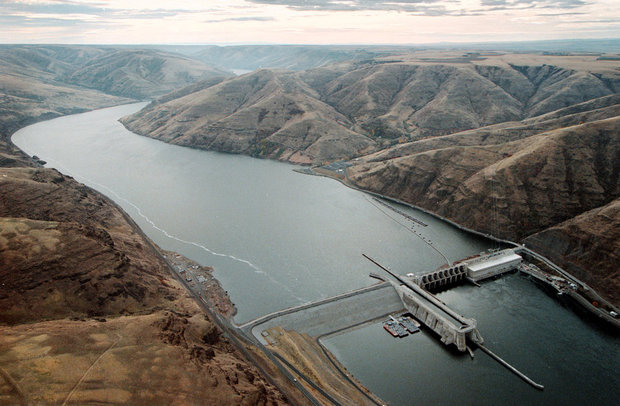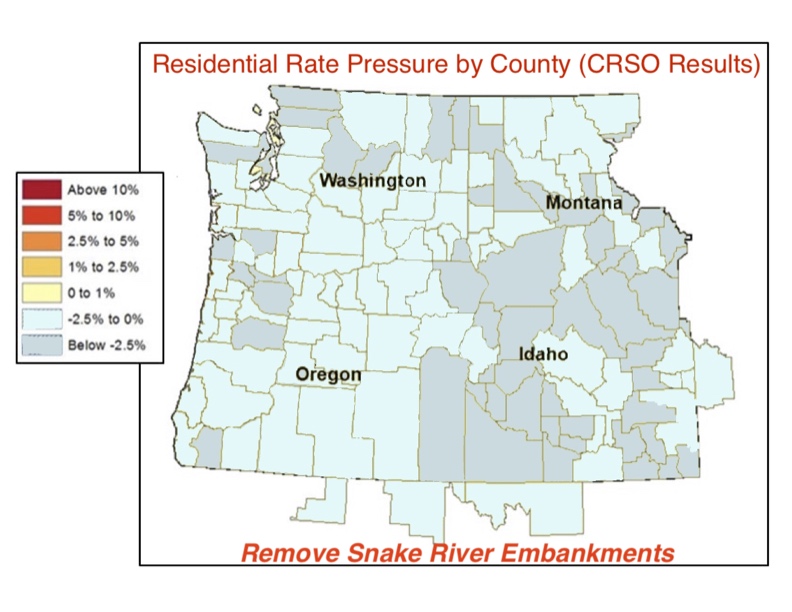forum
library
tutorial
contact

Power Company: Dam Removal
Would Hurt Reliability, Raise Costs
by Matthew Weaver
Capital Press, March 2, 2021
|
the film forum library tutorial contact |

|
Power Company: Dam Removal
by Matthew Weaver
|
"As of right now, there is no plan for how we are going to replace that with reliable energy sources"
-- Andy Barth, Inland Power and Light.
 U.S. Rep. Mike Simpson's $33.5 billion plan to remove four dams on the Lower Snake River would hurt the reliability of the region's power grid and increase rates, a representative of a regional power company says.
U.S. Rep. Mike Simpson's $33.5 billion plan to remove four dams on the Lower Snake River would hurt the reliability of the region's power grid and increase rates, a representative of a regional power company says.
"Hydropower has been our savior to not only have reliable, but also affordable energy," said Andy Barth, business development and community relations officer for Inland Power and Light.
Inland Power serves 13 counties in eastern Washington and northern Idaho. Avista primarily serves urban areas, while Inland Power serves most of the rural areas.
Roughly 83% of the region's power is generated by dams, and 11% by nuclear generators.
That keeps power rates among the lowest in the country, Barth said. The national average rate is 13.04 cents per kilowatt-hour. Inland Power's is 8.37 cents.
Barth spoke during the recent Spokane Ag Show.
Simpson, an Idaho Republican, has not proposed legislation, but in February released a $33.5 billion "concept" for salmon recovery, which includes removing the Lower Granite, Little Goose, Lower Monumental and Ice Harbor dams on the lower Snake River in 2030 and 2031.
Breaching the four dams would remove 1,000 megawatts of peak capacity from the power grid, Barth said.
"As of right now, there is no plan for how we are going to replace that with reliable energy sources, something that can produce around the clock," Barth said. "If Washington is not careful, we will experience the rolling blackouts that California did. It's a matter of 'when,' and not 'if.'"
One thousand megawatts can power 800,000 homes, Barth said.
The power grid peak capacity is currently 92.3 million megawatts, Barth said. As the region moves toward using more power for all-electric vehicles, the demand for electricity will "skyrocket," he said.
"Taking electric generation off of the grid during this time of transition and demand increase is irresponsible and negligent," Barth said.
Wind and solar power are good intermittent power generators, but they are not stable and constant, he said.
"When the sun goes down, solar quits producing," Barth said. "If the wind conditions are not just right, wind can't produce."
Eventually, battery back-ups will be the key to solar and wind power success, Barth said, but battery technology is nowhere near ready to be used for large-scale energy storage.
Clean, dispatchable on-demand power must be in place and operational prior to dam breaching, a representative of Simpson told the Capital Press.
Using wind and solar power as the primary sources of energy would raise utility costs, the cost of agricultural inputs and outputs and shipping, and even the cost of removing the dams, Barth said.
 "This is going to be extremely expensive, take many years to finally pay off these costs and we don't have a direct answer as to who plans to pay for all of this -- which usually means, when the government doesn't provide the funds, the taxpayers will pay for it," Barth said.
"This is going to be extremely expensive, take many years to finally pay off these costs and we don't have a direct answer as to who plans to pay for all of this -- which usually means, when the government doesn't provide the funds, the taxpayers will pay for it," Barth said.
The concept is intended to reduce the operational costs of the Bonneville Power Administration, the region's federal power marketing agency, and give it greater flexibility, Simpson's representative said.
Direct power land use of wind and solar, land that can not be used for any other purpose, would be 567 square miles, 2.5 times the size of Portland and Seattle combined, Barth said.
"That is a lot of land that will need to be used just for solar and wind generation, and we don't have that kind of resource to provide, along with a growing state," Barth said.
Simpson's representative said the concept proposes investments in battery, pump and hydrogen storage and possibly small modular nuclear reactors, "all of which would be clean and firm power replacement alternatives." They could be sited around the Northwest to optimize the efficiency and reliability of the grid.
This is the fourth version of a plan Simpson has pitched over the years, Barth said. The latest concept includes a 35-year moratorium on dam litigation.
"This little tidbit has a lot of people who would normally oppose the breaching of the dams at least stopping to listen," Barth said.
The moratorium does not cover all dam litigation, just certain parts of the fish recovery process, Barth said.
"Rather than an overarching dam litigation protection, it's very specific and there can still be dam litigation on other sections of the dam fight," Barth said.
Normally, Congress cannot dictate what courts do, he said, adding that Inland Power wants assurances that the courts would uphold the litigation moratorium.
Barth said the power company "honestly" doesn't know how likely Simpson's plan is to move forward. Simpson has claimed the plan won't happen without the support of all Pacific Northwest lawmakers, Barth said.
"He knows that if you say dam breaching, it is a conversation stopper, but he’s asking producers to look at the concept," Simpson's representative said.
"It's common in government for people to say, 'If you want to know what's in the bill, pass it and then look at the details,'" Barth said. "We're very afraid that's going to happen here with this plan. It's such a large and lofty goal with so many moving parts, we're not going to know the actual implication it's going to have until it's too late."
learn more on topics covered in the film
see the video
read the script
learn the songs
discussion forum
